For the first time in several years, the Ottawa Senators are in the place they want to be. They have high-profile prospects in their farm system who are itching to join the talented young stars already showing their skills in the NHL. Even their big free-agent signings are on the young side; goaltender Matt Murray is still under 30 years old, and winger Evgenii Dadonov is just over at 31.
However, with such a young roster, the Senators won’t have the luxury of selling their talented veterans at a premium when the 2021 trade deadline arrives. Only three players are over 30 on the active roster, and of those three, only Dadonov is expected to make a big impact. While that’s great for the team’s future it’s not so promising on the trade front, where general manager Pierre Dorion has thrived. The players that other teams want are now the players the Senators can’t afford to give up.
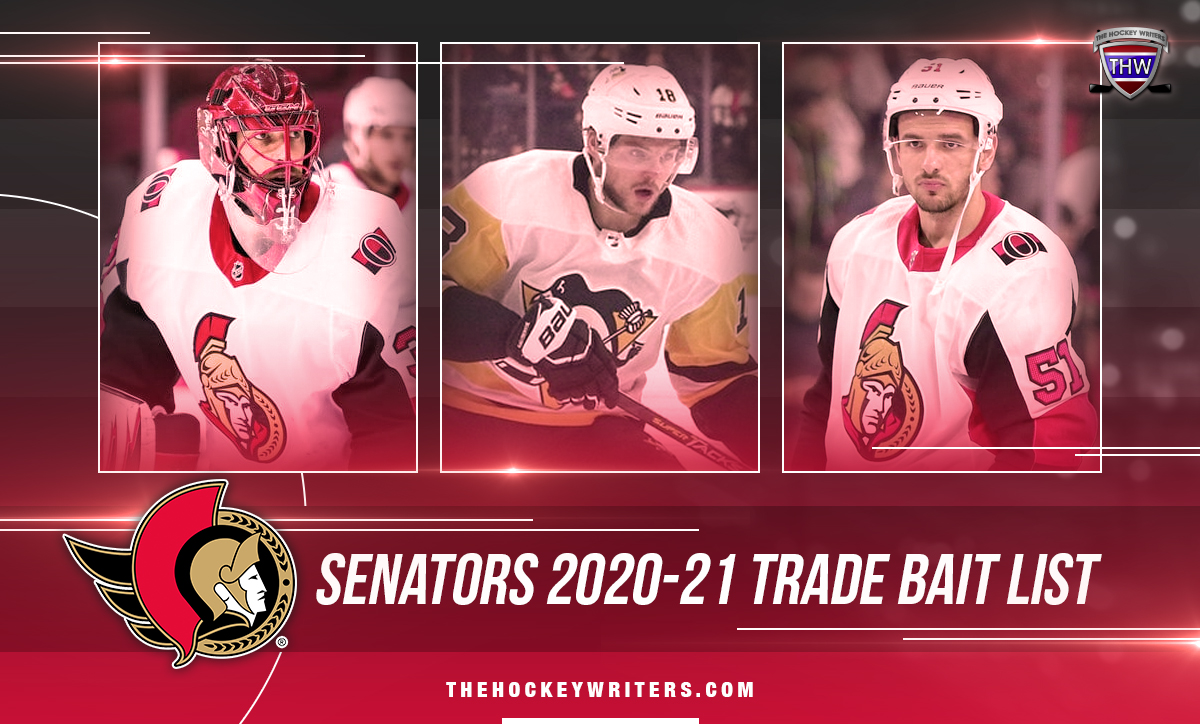
But that’s not to say Dorion won’t make any moves. There are a few veterans who could catch the eye of playoff-bound teams, especially if they outperform expectations. On a Senators team that is again expected to finish near the bottom of the standings, Dorion will have to continue to find creative solutions for a long list of problems, but that list is slowly getting smaller. A few more tweaks and this could be a competitive team once again. Here are five players who could be moved in the 2020-21 season.
Alex Galchenyuk
Acquiring Galchenyuk for just over $1 million for one season was one of Dorion’s best moves this offseason. The former third-overall pick in 2012 has been trending downwards since 2015-16 when he put up 30 goals and 56 points, but he’s proven that he can be an impact forward and should be able to do it again. If he continues to struggle, the Senators won’t re-sign him or they can place him on waivers, which makes this a very low-risk deal.

However, if Galchenyuk finds his rhythm again, the Senators will have a chance to win big. They could choose to keep him long-term – he is only 26 years old, after all – and his past performances will keep an extension on the cheaper side. They could also choose to trade him when his value is highest and there should be a list of interested buyers come deadline day. His cheap, short-term deal makes him very moveable, even for teams tight against the salary cap, and the return could be either a player of a similar age or another promising prospect.
Related: Senators Are Strong at Right Wing Heading into 2020-21
Given the nature of his contract, it’s likely the Senators will try to trade him at the deadline in exchange for future assets, especially with Tim Stuetzle, Logan Brown, and Josh Norris fighting for a center position in 2020-21 and beyond. Further down the road, Shane Pinto will clog that up even further, making Galchenyuk’s long-term future in Ottawa a shaky one.
Artem Anisimov
Unlike Galchenyuk, Anisimov’s $4.55 million contract will be far more difficult to move. More than half the league has less than $3 million in available cap space and given that he’s 32 and starting to decline, teams won’t be lining up to acquire his services. He also only played 49 games in 2019-20, after suffering a series of injuries that ended in a concussion and the end of his season.
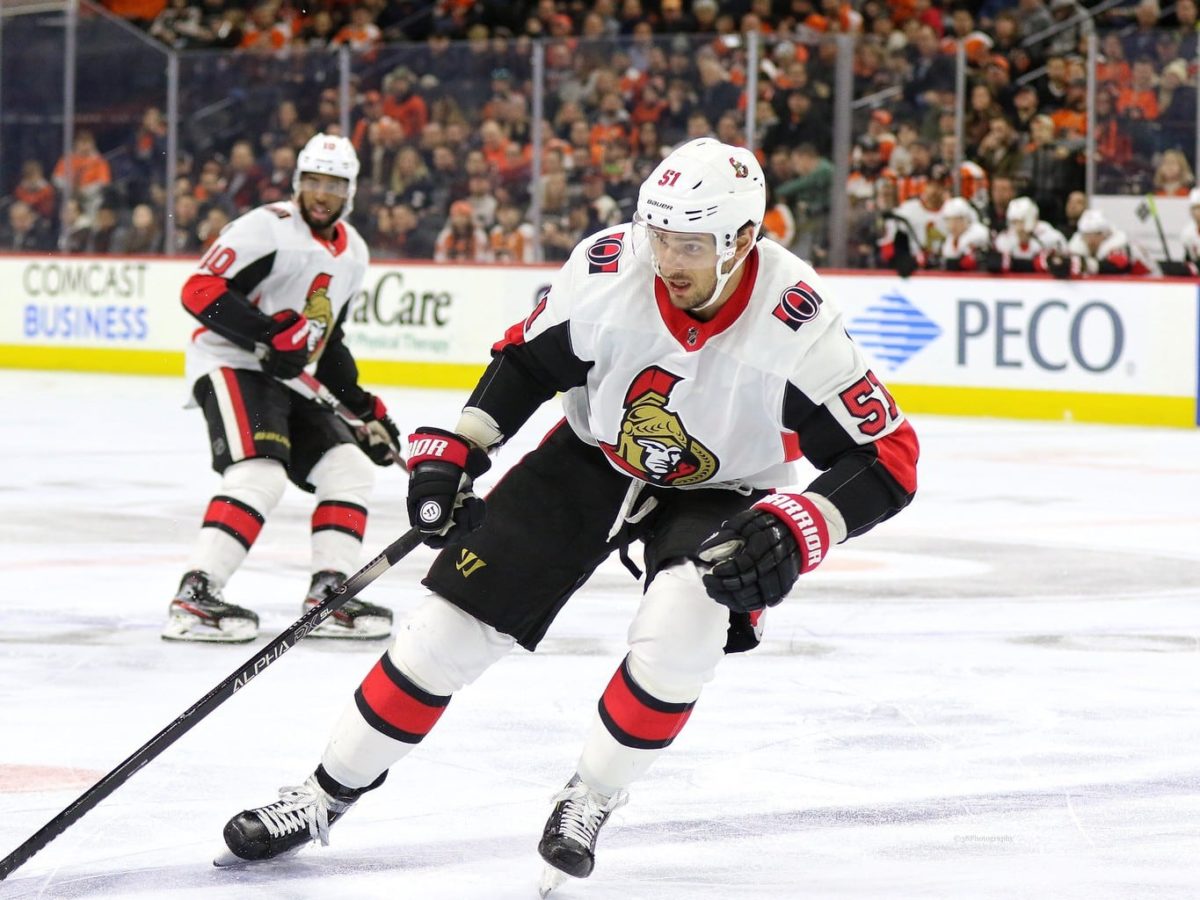
That’s not to say Anisimov is unmoveable. The veteran is a four-time, 20-goal scorer and was scoring at nearly a 0.5 point-per-game pace last season, despite his injuries. His deal also expires at the end of the season, making him a potential playoff rental, especially if he can remain healthy.
A playoff team looking for a veteran scoring option with postseason experience may even pay handsomely for him; Blake Coleman had comparable stats to Anisimov and netted the New Jersey Devils Nolan Foote as well as a conditional first-round pick, which they used to pick Shakir Mukhamadullin.
Nikita Zaitsev
Zaitsev also has a contract that could be hard to move. After a very productive rookie season, he signed a $4.5 million extension with the Toronto Maple Leafs in 2017. However, since then, he’s struggled to replicate those numbers and was swapped for Cody Ceci two seasons later. With the Senators, Zaitsev has played in the top-four and frequently alongside Thomas Chabot on the defense-starved Senators. In that role, he recorded his highest point-per-game rate since 2016-17, but over 82 games, he still would only have scored 16 points.
Still, Ottawa may try to move him for the biggest return they can get to make room for their upcoming defensive prospects like Jacob Bernard-Docker, Erik Brannstrom, and Lassi Thomson. The only problem is that his deal doesn’t expire until 2023-24. and with his steep price tag, buyers will be few and far between. The Senators would probably love to be free from that cap hit, but there might not be enough interest to sell him.
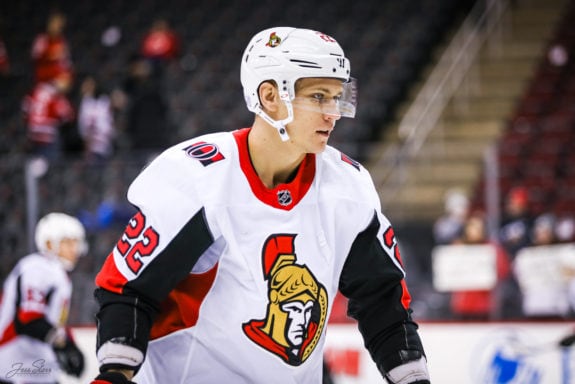
There’s also a chance the Senators decide to keep him, even if he returns to form, due to the upcoming Seattle Expansion Draft. Since the Senators will have to expose one defenseman with NHL experience who is under contract for 2021-22, only Brannstrom and Chabot fit those requirements other than Zaitsev. The only caveat is that Zaitsev has a modified no-movement clause, which will complicate both a potential trade and the Senators’ protection list.
Anders Nilsson
At the start of last season, Nilsson was playing tandem with Craig Anderson, splitting the starts until Nilsson suffered a concussion that ended his season. He finished with a 0.908 save percentage over 20 games, only a point behind Carey Price (Montreal Canadiens) and Frederik Andersen (Maple Leafs) and a point ahead of David Rittich (Calgary Flames). He appears to be ready for the 2020-21 season, having had extra time to recover, and is expected to take some of the pressure off newcomer Murray, who has also struggled with injuries in the past.
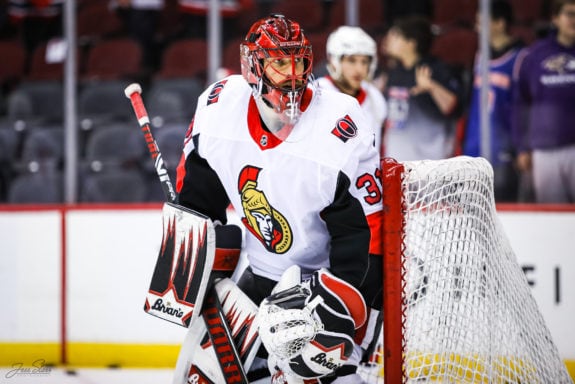
Nilsson’s goals-against average (GAA) in 2019-20 may have several teams inquiring about his services, and it doesn’t hurt that he’s signed to an affordable $2.6 million that’s set to expire this season.
The Senators don’t have a lot of experience behind him, but they have several promising prospects in Joey Daccod, Filip Gustavsson, and Marcus Hogberg who will be fighting for an extended call-up. If Murray can stay healthy, Nilsson will become much more moveable, and teams like the Anaheim Ducks, Chicago Blackhawks, or even the St. Louis Blues may be in the market for an experienced backup.
Erik Gudbranson
On the one hand, Gudbranson provides little in the way of offense. In nine seasons, he has only scored over 10 points once, which was in 2014-15 when he put up four goals and nine assists. He’s been primarily used as a depth defensive-defenseman, but he also carries a $4 million cap hit, which makes him far too expensive for most playoff-bound teams. Then there are the injuries that have caused him to miss part of every season in his career.
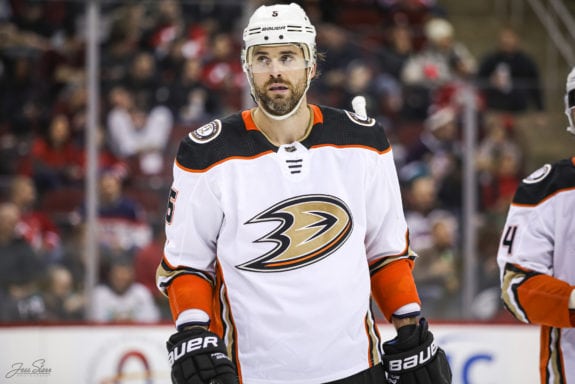
And yet, the Senators just traded for him at the 2020 Draft for the low price of a 2021 fifth-round pick. Gudbranson may not be a top-pairing defender, but he brings plenty of leadership skills, which Dorion cited as a key reason for acquiring him. A strong season could entice other playoff-bound teams to kick the tires on a potential trade. He’s also just 28 years old, which should be the prime of his career, and brings a gritty, physical presence to the blue line that many see as a necessity to win a Stanley Cup.
On this list, Gudbranson is probably the least likely to be moved, thanks in part to having grown up in Ottawa. But if the right offer comes along, Dorion has proven to be a savvy negotiator and has been able to get the most out of his trades. Veteran Marc Methot, a similar type of defenseman, was traded from the Vegas Golden Knights to the Dallas Stars for prospect Dylan Ferguson and a second-round pick. An offer like that would be tough for the Senators to pass up.
Looking to the Future
The Senators appear to have begun transitioning out of their rebuild, meaning the 2020-21 season will be the first real look at the fruits of their labour. The initial projections look very good, with Brady Tkachuk and Chabot leading the charge ahead of a myriad of talented youngsters. Adding a few players who can provide grit and leadership has been the team’s latest focus, and fans are optimistic that the organization is headed in the right direction.
But there is still a lot of work to be done, and if the Senators can continue boosting their farm system, then they should do it, even if it means cutting away more veterans. The Senators will struggle again this season, and while the hope is that it will be less painful than 2019-20, anything that can help should be considered.